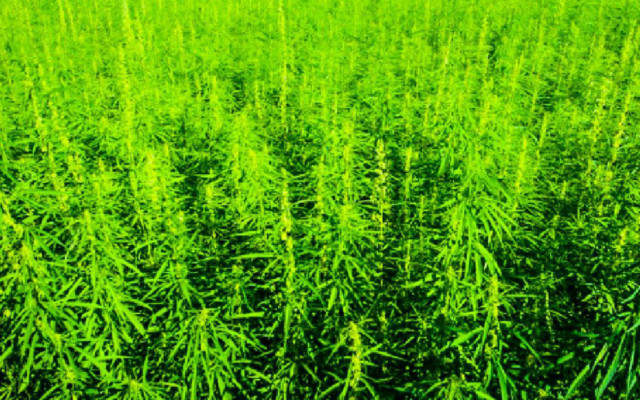Hemp fits right into the category of the superfoods that are garnering increasing attention in the marketplace because of their nutritional properties. Following are some insights.
Hemp, the plant
Hemp is a flowering plant in the Cannabaceae family (or Cannabinaceae), a subset of Urticales. There are three species – Sativa, Indica and Ruderalis – and several subspecies.
It is an annual plant, germinating in spring and flowering in late summer. There are also considerable variations. It grows to an average height of 1.5-2 meters and is characterised by palmate leaves on a straight, hairy stem. Pollination is anemophilous, i.e. by wind transport.
Its origin has long been attributed to Central Asia, where traces of cultivation were found as early as 5,000 BC. Recent studies, however, have shown the existence of wild hemp in Europe even before the aforementioned period.
In Italy, hemp farming has been developed since the Middle Ages, with prevalence in the areas between Bologna and Ferrara, as well as Rovigo and Padua. A famous painting by Guercino, 1615-1616, effectively describes the laborious extraction of plant bundles from the maceratoio and their placement in conical stacks to dry. Italy was the second largest producer of hemp in the world, after Russia, and its cultivation was far more profitable than the wheat to which it was alternated. Until, in the immediate post-war period, hemp cultivation collapsed. (1)
Research in recent years has also revealed the plant’s ability to absorb heavy metals and thus reclaim soil polluted by heavy industry. Successful experiments have been conducted to this end in Taranto and Cava dei Tirreni.
Hemp, the uses
Industrial hemp (2) has always been used for the quality of its fibre, which is useful for producing cordage, paper and textiles.
Its use in food and cosmetics production – as well as in bio-building and biofuels – only dates back to recent decades.
Hemp seeds and hemp flour, superfood?
Hemp seeds can be consumed as they are, as a dressing for salads, vegetables and other dishes. Or in the form of hemp flour, to be used in baked goods and pasta production.
The composition of hemp seeds distinguishes them as a complete food, consisting of more than 30% fat (mostly polyunsaturated), about 25% protein and the same amount of carbohydrates. In addition to significant amounts of dietary fibre and micronutrients (vitamins and minerals), as per the tables below. (3)
Hemp seeds and hemp flour, superfood?
Hemp seeds can be consumed as they are, as a dressing for salads, vegetables and other dishes. Or in the form of hemp flour, to be used in baked goods and pasta production.
The composition of hemp seeds distinguishes them as a complete food, consisting of more than 30% fat (mostly polyunsaturated), about 25% protein and the same amount of carbohydrates. In addition to significant amounts of dietary fibre and micronutrients (vitamins and minerals), as per the tables below. (3)
Average nutritional values of whole, decorticated hemp seed and post-sprouting residue (raw panel)

The quality of the proteins present in hemp seeds is also noteworthy. Indeed, edestine combined with albumin promotes the availability of essential amino acids in a perfect proportion, which provides our organism with the necessary elements for the construction of immunoglobulins, which perform the function of antibodies.
Hemp oil, superfood?
Hemp oil, derived from cold-pressed seeds, consists of more than 80 per cent polyunsaturated fatty acids (PUFA). It is therefore an excellent source of antioxidants and in particular essential fatty acids (AGEs) such as linoleic acid (ω6, Omega6) and alpha-linolenic acid (ω3, Omega3).
Hemp seed is the only food that naturally contains Omega3 and Omega6 fatty acids in a ratio of 2.5:1, i.e. ‘perfect’ to be assimilated by humans (Simopoulos et al., 2000)
Hemp for food use, which rules?
The Ministry of Health, in its circular of 22.5.09, admitted the use of hemp seed for human consumption in Italy. (4) Declaring that, on the basis of the indications of the Superior Institute of Health, ‘the possibility of detecting traces (of THC) in the processing products (flours and oils) is exclusively due to contamination of floral organs and to the adoption of inadequate practices of seed husking’.
The need to adopt appropriate self-control plans to ensure product safety, also in terms of the substantial absence of psychoactive substances, by farmers and food operators remains firm.
The varieties of industrial hemp that can be legally cultivated in Italy are those included in the list of European-certified varieties. It has been defined what is meant by industrial hemp, i.e. varieties listed in the EU register, with a regular label and THC values not exceeding 0.2%. (5)
Laura Pontassuglia and Dario Dongo
Notes
-
An interesting read on this subject at this link
-
Industrial hemp is defined as the variety substantially free of THC (tetrahydrocannabinol, the psychoactive active ingredient)
-
source Euphytica 140: 65-72, 2004. J.C. Callaway, Department of Pharmaceutical Chemistry, University of Kuopio, FIN-70211 Kuopio, Finland.
-
See c.d. Hemp Law, law 242/16












